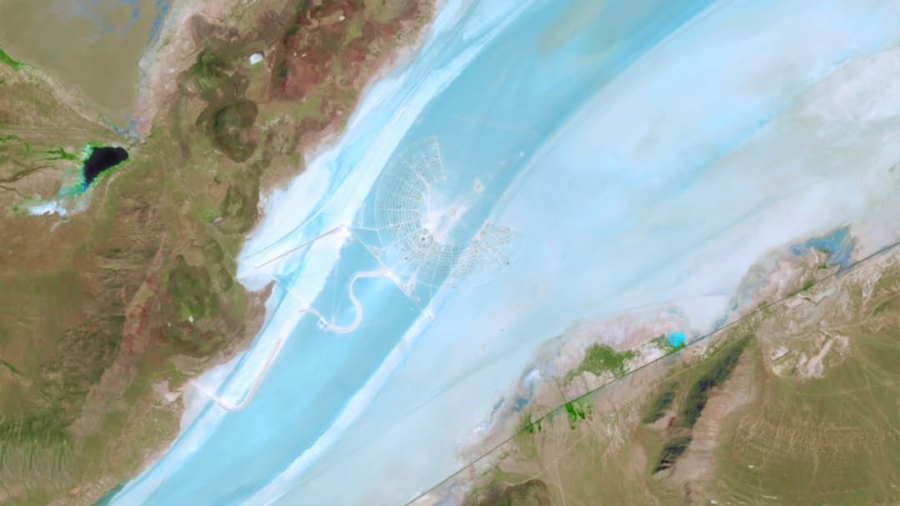The intersection of artificial intelligence (AI) and environmental conservation has emerged as a critical area of focus in recent years, particularly in the context of deforestation. Deforestation, the large-scale removal of trees from forested areas, poses significant threats to biodiversity, climate stability, and the livelihoods of communities that depend on forests. The World Bank estimates that approximately 10 million hectares of forest are lost each year, primarily due to agricultural expansion, logging, and infrastructure development.
As the urgency to combat climate change intensifies, innovative solutions are required to monitor and mitigate deforestation effectively. AI, with its capacity for data analysis and pattern recognition, offers promising tools to address these challenges. AI technologies can process vast amounts of data from various sources, including satellite imagery, drone surveillance, and ground-based sensors.
This capability allows for real-time monitoring of forest conditions and deforestation activities. By leveraging machine learning algorithms, AI can identify patterns and anomalies in forest cover changes, enabling stakeholders to respond swiftly to illegal logging or land conversion. The integration of AI into deforestation monitoring not only enhances the accuracy of data collection but also empowers policymakers and conservationists with actionable insights to protect vital ecosystems.
Key Takeaways
- AI plays a crucial role in monitoring and preventing deforestation by providing advanced technology and data analysis capabilities.
- Current challenges in deforestation monitoring include limited resources, lack of real-time data, and the inability to cover large and remote areas.
- AI technology helps in deforestation prevention by providing accurate and timely information, enabling proactive measures to be taken.
- Advancements in AI technology, such as satellite imagery analysis and machine learning algorithms, have significantly improved deforestation monitoring and prevention efforts.
- Case studies of AI in deforestation prevention showcase successful applications of technology in identifying and addressing deforestation activities.
Current Challenges in Deforestation Monitoring
Infrastructure and Resource Constraints
Many regions, particularly in developing countries, lack the necessary infrastructure and resources for comprehensive monitoring. This limitation hinders the ability to obtain timely data on deforestation rates.
Methodological Limitations
Traditional methods of monitoring, such as ground surveys and aerial photography, are often time-consuming and labor-intensive. These methods can also be limited by accessibility issues in remote or rugged terrains. Moreover, the variability in deforestation drivers across different regions necessitates tailored monitoring approaches that can account for local contexts and specific threats.
Standardization and Comparison Challenges
The lack of standardized metrics for measuring deforestation complicates efforts to compare data across regions and time periods. Without consistent methodologies, it becomes challenging to assess the effectiveness of conservation initiatives or to allocate resources efficiently.
The Role of AI in Deforestation Prevention

AI plays a transformative role in enhancing the effectiveness of deforestation prevention strategies. By automating data analysis and interpretation, AI systems can provide real-time insights into forest health and changes in land use. For instance, machine learning algorithms can analyze satellite images to detect changes in tree cover with remarkable precision.
This capability allows for early detection of illegal logging activities or land encroachment, enabling authorities to take swift action before significant damage occurs. Moreover, AI can facilitate predictive modeling to forecast future deforestation trends based on historical data and current land use patterns. By understanding potential future scenarios, policymakers can implement proactive measures to mitigate risks.
For example, AI-driven models can simulate the impact of different agricultural practices on forest cover, helping farmers adopt sustainable methods that minimize deforestation while maintaining productivity. This predictive capacity is crucial for balancing economic development with environmental conservation.
Advancements in AI Technology for Deforestation Monitoring
Recent advancements in AI technology have significantly enhanced its application in deforestation monitoring. One notable development is the use of deep learning techniques, which enable more sophisticated image recognition capabilities. Convolutional neural networks (CNNs), a type of deep learning model, have shown exceptional performance in analyzing satellite imagery for land cover classification.
These models can distinguish between various land types—such as forests, agricultural land, and urban areas—allowing for more accurate assessments of deforestation rates. Additionally, the integration of AI with remote sensing technologies has revolutionized how we monitor forests. High-resolution satellite imagery from platforms like Planet Labs and Sentinel-2 provides detailed views of forested areas.
When combined with AI algorithms, this data can be processed at unprecedented speeds, enabling near-real-time monitoring of deforestation activities. Furthermore, advancements in drone technology have made it possible to capture high-resolution images from hard-to-reach areas, providing valuable data that can be analyzed using AI tools.
Case Studies of AI in Deforestation Prevention
Several case studies illustrate the successful application of AI in combating deforestation across different regions. In Brazil, for instance, researchers have employed machine learning algorithms to analyze satellite imagery from the Amazon rainforest. By training models on historical data regarding deforestation patterns, they have developed systems capable of predicting areas at high risk for illegal logging.
This proactive approach has allowed authorities to allocate resources more effectively and intervene before significant forest loss occurs. Another compelling example comes from Indonesia, where AI has been utilized to monitor peatland degradation—a critical issue due to its contribution to greenhouse gas emissions. The Indonesian government partnered with tech companies to deploy AI-driven monitoring systems that analyze satellite data for signs of land conversion and illegal activities.
These systems have proven instrumental in identifying hotspots of deforestation and enabling timely interventions by law enforcement agencies.
Ethical and Social Implications of AI in Deforestation Prevention

While the integration of AI into deforestation prevention offers numerous benefits, it also raises ethical and social considerations that must be addressed. One concern is the potential for surveillance technologies to infringe on the rights of local communities. In regions where indigenous populations rely on forests for their livelihoods, increased monitoring may lead to conflicts over land use and resource access.
It is essential for stakeholders to engage with local communities and ensure that their voices are heard in decision-making processes related to forest management. Moreover, there is a risk that reliance on AI could lead to a reduction in human oversight and traditional knowledge systems that have been developed over generations. While AI can enhance data analysis capabilities, it cannot replace the nuanced understanding that local communities possess regarding their environments.
Therefore, it is crucial to adopt a collaborative approach that combines technological advancements with local expertise to create sustainable solutions for forest conservation.
Collaborations and Partnerships in AI and Deforestation Prevention
The fight against deforestation requires collaborative efforts among various stakeholders, including governments, non-governmental organizations (NGOs), tech companies, and local communities.
For instance, initiatives like Global Forest Watch bring together satellite data providers, researchers, and conservationists to create a comprehensive platform for monitoring forest changes worldwide.
Additionally, collaborations between tech companies and environmental organizations have led to the development of specialized tools designed for deforestation monitoring. Companies like Microsoft have partnered with NGOs such as Conservation International to create AI-driven platforms that analyze satellite imagery for signs of deforestation. These partnerships not only enhance technological capabilities but also ensure that conservation efforts are grounded in scientific research and community engagement.
The Future Outlook for AI in Deforestation Monitoring and Prevention
Looking ahead, the future of AI in deforestation monitoring and prevention appears promising as technology continues to evolve. The increasing availability of high-resolution satellite imagery combined with advancements in machine learning will likely lead to even more accurate and timely assessments of forest conditions.
Moreover, as awareness grows regarding the importance of sustainable practices, there is potential for greater investment in AI-driven solutions for environmental conservation. Governments and organizations may prioritize funding for research and development initiatives aimed at harnessing AI’s capabilities for forest protection. Ultimately, the successful integration of AI into deforestation prevention strategies will depend on a commitment to ethical practices, community involvement, and interdisciplinary collaboration among stakeholders dedicated to preserving our planet’s vital ecosystems.
In a related article, Tesla refutes Elon Musk’s timeline on full self-driving, the debate over the capabilities of AI technology continues to be a hot topic. As advancements in AI are being made in various industries, including monitoring and preventing deforestation, it is important to consider the limitations and challenges that come with relying on artificial intelligence for such critical tasks. The article delves into the complexities of achieving full self-driving capabilities in the automotive industry, shedding light on the intricacies of AI development and implementation.
FAQs
What is AI monitoring and preventing deforestation?
AI monitoring and preventing deforestation refers to the use of artificial intelligence technology to track and analyze changes in forest cover, identify potential deforestation activities, and take proactive measures to prevent further destruction of forests.
How does AI help in monitoring and preventing deforestation?
AI helps in monitoring and preventing deforestation by analyzing satellite imagery to detect changes in forest cover, identifying patterns of deforestation activities, and predicting potential deforestation hotspots. It also enables the development of early warning systems and the implementation of targeted interventions to prevent deforestation.
What are the benefits of using AI for monitoring and preventing deforestation?
The benefits of using AI for monitoring and preventing deforestation include improved accuracy and efficiency in detecting deforestation activities, timely intervention to prevent further destruction of forests, and the ability to prioritize and target conservation efforts in high-risk areas.
What are the challenges of using AI for monitoring and preventing deforestation?
Challenges of using AI for monitoring and preventing deforestation include the need for high-quality and up-to-date satellite imagery, the complexity of analyzing large volumes of data, and the integration of AI technology with on-the-ground conservation efforts and policy-making.
What is the future outlook for AI in monitoring and preventing deforestation?
The future outlook for AI in monitoring and preventing deforestation is promising, with continued advancements in AI technology, increased availability of satellite data, and greater collaboration between technology companies, conservation organizations, and governments to address deforestation challenges.

